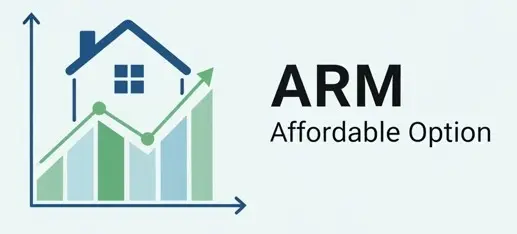Navigating Your Mortgage: Understanding Adjustable-Rate Mortgages
Choosing a mortgage is one of the biggest financial decisions you’ll make, and while fixed-rate mortgages are popular, Adjustable-Rate Mortgages (ARMs) offer a different path, particularly attractive in certain market conditions. Understanding how they work is key to determining if an ARM is right for you.
What is an Adjustable Rate Mortgage (ARM)?
An Adjustable-Rate Mortgage (ARM) is a type of home loan where the interest rate isn’t fixed for the entire loan term. Instead, it starts with a fixed introductory rate for a set period, and after that, the rate adjusts periodically based on market conditions, potentially leading to changes in your monthly payments.
How do ARMs Work?
ARMs typically begin with a “teaser” rate, which is a lower, fixed interest rate for an initial period (e.g., 3, 5, 7, or 10 years). Once this introductory period ends, the interest rate will adjust at predetermined intervals (e.g., annually or semi-annually), moving up or down based on a specific financial index plus a fixed margin.
Types of ARM Loans
There are various types of ARM loans, commonly identified by two numbers, such as “5/1 ARM” or “7/6 ARM.” The first number indicates the length of the initial fixed-rate period in years, while the second number specifies how often the rate will adjust after that period (e.g., “1” for annually, “6” for every six months).
Adjustable Rate Mortgage Advantages and Disadvantages
The primary advantage of an ARM is the lower initial interest rate, which can lead to more affordable monthly payments in the early years of the loan, potentially allowing you to qualify for a larger home. However, the main disadvantage is the uncertainty of future payments, as your interest rate could increase significantly, leading to higher monthly costs.
Factors Affecting ARM Interest Rates
The fluctuating interest rates on an ARM are primarily influenced by two components: a chosen financial index and a fixed margin. The index reflects broader market interest rate movements, while the margin is a set percentage added to the index by your lender.
ARM vs Fixed-Rate Mortgage
The fundamental difference between an ARM and a fixed-rate mortgage lies in the predictability of the interest rate. A fixed-rate mortgage offers a consistent interest rate and monthly payment for the entire loan term, providing stability and peace of mind, whereas an ARM’s payments can change, offering potential savings initially but also future uncertainty.
What is a Hybrid ARM?
A Hybrid ARM combines elements of both fixed-rate and adjustable-rate mortgages. It features an initial period with a fixed interest rate, followed by periodic adjustments based on a market index, offering a balance between initial stability and the potential for rate changes.
How does an ARM Index Work?
An ARM index is a benchmark interest rate that lenders use to determine the periodic adjustments on an ARM. Common indices include the Secured Overnight Financing Rate (SOFR) or the Constant Maturity Treasury (CMT) rates, and as this index moves up or down, so too does your ARM’s interest rate.
What is an ARM Margin?
The ARM margin is a fixed percentage point amount that your lender adds to the chosen index to calculate your interest rate after the initial fixed period expires. This margin is set at the time of loan origination and remains constant throughout the life of the loan.
What is an ARM Cap?
An ARM cap limits how much your interest rate can change during each adjustment period (periodic cap) and over the entire life of the loan (lifetime cap). These caps provide a measure of protection against drastic increases in your monthly payments, ensuring your rate won’t exceed a certain threshold.
When is an ARM a Good Idea?
An ARM might be a good idea if you plan to sell or refinance your home before the initial fixed-rate period ends, or if you anticipate your income increasing significantly in the future, allowing you to comfortably handle potential payment increases. It can also be attractive when current fixed rates are high and you believe rates will decline.
Refinancing an ARM
Yes, you can refinance an ARM, and it’s a common strategy for borrowers who want to lock in a fixed rate before their ARM’s interest rate begins to adjust, or if market rates have fallen significantly. Refinancing can help mitigate the risk of rising payments, but it does involve new closing costs.
ARM Disclosures and Consumer Protections
Lenders are required by law to provide comprehensive disclosures for ARMs, outlining the terms, how the interest rate will be calculated, and potential payment changes. These disclosures, mandated by consumer protection laws like the Truth in Lending Act (TILA), are crucial for borrowers to understand the full scope of their ARM agreement.
To discuss Adjustable Rate Mortgage opportunities, give local mortgage loan broker Joe Bechtold a call. His contact number is listed on this website.



